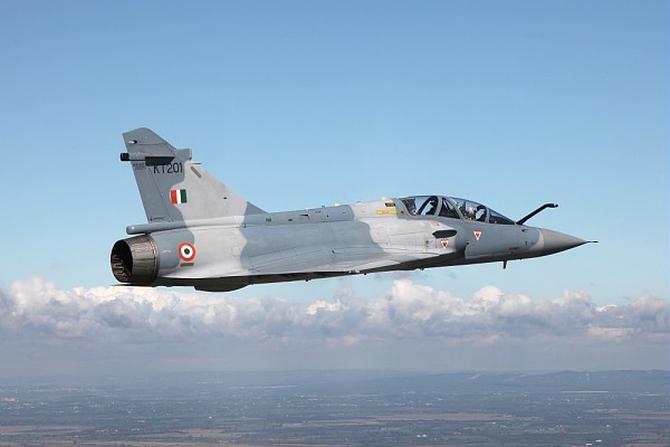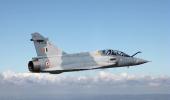'It is my opinion that not releasing the Balakote Battle Damage Assessment immediately post strike was a phenomenal blunder, perception battle wise,' says Group Captain Murli Menon (retd), India's former air adviser in Pakistan.

The IAF's unprecedented air strike on the Jaish training facility at Balakote and the PAF's riposte at Naushera led to some anxious moments for most Indians. Now that our hero Wing Commander Abhinandan is back safe and sound, perhaps it is time to take stock of our aerial operations so far.
We still have no details of the tactical air pictures of the Balakote strike or the Naushera aerial engagement. So let's keep to the big picture and the planning aspects.
At the outset, it is my opinion that not releasing the Balakote Battle Damage Assessment (BDA) immediately post strike was a phenomenal blunder, perception battle wise.
One can understand holding it back were the operation a special forces one or indeed a secret mission. But since the establishment chose to go to town over it (elections be damned) it would have been prudent if the IAF had been permitted to release the imageries from the Spice weapons or the purported Heron recce UAV which was statedly overhead.
Some enterprising retired army colonel uploaded some OSINT imageries of the target area which only showed some smoke plumes but no details of damage.
If indeed 350 terrorists were killed , it was vital that proof be shown to the world at large. Let us hope this is done sooner than later!
The second most important aspect that needs serious consideration by the planners is the media's involvement. Especially in the sub continental context, it is foolhardy to give in to the temptation of outsourcing your psywar effort to 'ranting' war-mongering studio warriors.
This could well take options of graded escalation out of your hands, given the uncalled for jingoism. It would have been adviseable to carry out the mission and then announce the details at an opportune moment without the frenzy of 'an uncontrolled media' and its drawing room wars.
Whilst social media definitely helped in the ratcheting of pressure on Pakistan in terms of Abhinandan's release, unnecessary media frenzy non stop and its impact on popular opinion has virtually put paid to another similar aerial operation for the foreseeable future.
High profile large formation aerial strikes with their accompaniment of EW and AD escorts is a tough call, especially in the Indo-Pak context, given the radar/AWACS cover on both sides.
Even if surprise could be achieved in one strike, a second one soon thereafter is unlikely to succeed. And in a situation wherein repeat strikes have to be done against terror camps -- now that the Rubicon has been crossed as regards our political will for offensive action, special forces action or employment of special forces light -- Thrush aircraft or 'Little Bird' chopper types a la what the CIA/Blackwater combine employed in Mali, Iraq and Columbia -- need serious consideration.
One another mission which special forces aircraft permit is Combat Search and Rescue. If we had the training and the hardware to conduct this vital mission, Abhinandan could have been rescued by the IAF, more so as close to the LOC as he apparently was.
PSYOPS is another vital planning consideration.
Whilst the IAF inquiry would reveal what exactly caused Abhinandan's aircraft engine to flame out (so one hears), in any event we should have given it a spin to deny the Pakis the credit for shooting down our MiG 21, which apparently did NOT happen.
We lost a big chance to capitalise here and the Bison kill would have been so much sweeter for all of us.
Having done a super job of media management during Kargil, this should have come as second nature for the IAF. It is still not too late to rectify and put out the reason for the ejection.
The Pakis also would have learnt a thing or two such as the end user agreement trap on the US supplied F-16 and other equipment and problems in targeting in Indian territory given the anti-terrorism plank India capitalised on.
India too needs to think through terror targeting in the JeM context. Other than Bawahalpur, what else can we target?
Can the ISI be targeted in any manner?
If Lashkar-e-Tayiba needs to be hit, can we neutralise JUD facilities in Muridke and elsewhere?
Honing of real time intelligence gathering and neutralisation of terror training camps in built up areas would be challenging, but vital to avoid collateral damage and hence an advantage in the 'perception' war.
For old fogies like me, the employment of IAF airpower in a counter terror role and the Bison kill on the F-16 are stuff out of dreams! One has no doubt that the IAF would think through peculiarities of this air campaign in terms of targeting, weaponeering, BDA and CSAR.
Sustained training effort in these spheres alone would give us capability to show desired results on the ground.
NABHAH SPARSHAM DIPTAM










